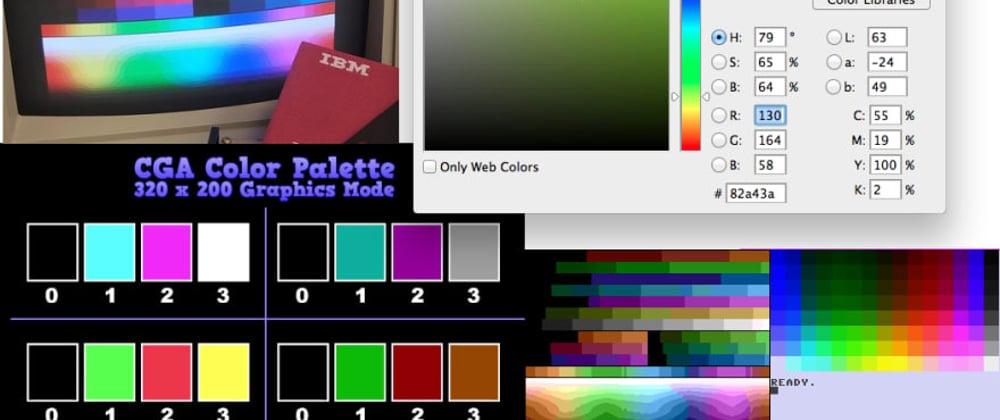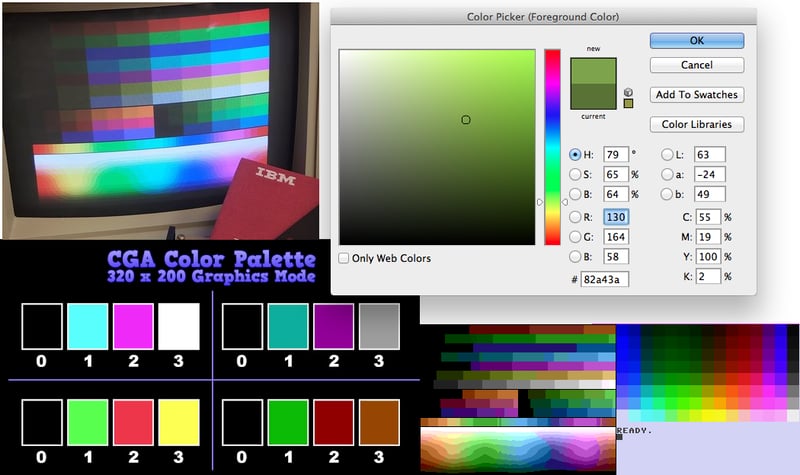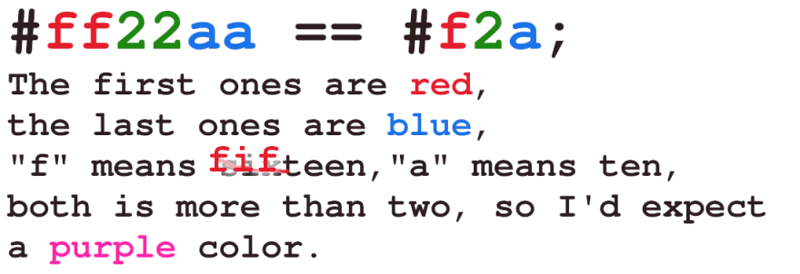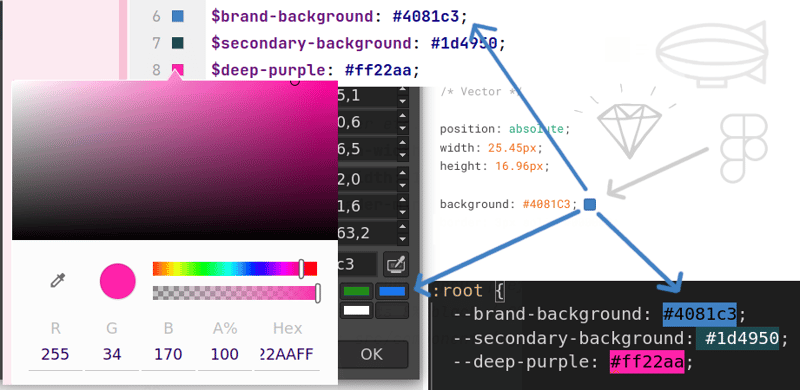"CSS4" will make even brighter colors available to web designers and developers. Like parent selectors, the upcoming CSS Level 4 Color proposal was first implemented in Safari. But before we dive deeper into the details, let's make it clear that "CSS4" does not exist. Thanks to Temani @afif for pointing it out, and thanks to @grahamthedev for suggesting the new title!
CSS has no Version Numbers
I added a link to the discussion about "CSS4" on CSS-Tricks.com. Of course there is no "CSS4" in the same strict sense that there has never been "MPEG 3" (MP3) or "Web3" either. But like @ppk and others have suggested, "CSS4" might help to make CSS more popular. On the other hand, I recently got quite upset about the so-called "Web3" discussion which inspired @hidde to his excellent post that the web doesn't have version numbers.
Brighter Color Spaces
Looking back at the old color palettes, like IBM CGA, Commodore 64, and the Adobe Photoshop color picker with its "Only Web Colors" checkbox, choosing from over 16 million RGB colors using 6-digit (or even 8-digit) hex codes, web designers may think that they had all the colors of the world.
But although we already have millions of colors in our browsers, it's the brightest colors that have been missing!
With the new color functions, we can use color(display-p3), and also lab() and lch() to go beyond the sRGB color space.
The previously available syntax defined colors in sRGB color space. (Named colors, hex colors, rgb(), and even hsl() color notations are all limited to the sRGB color space up to CSS3).
.srgb-color-syntax {
background-color: wheat;
border-color: #ffea21;
color: rgba(12, 200, 128, 0.2);
text-decoration-color: hsl(0 100% 50% / 0.5);
}
.wide-gamut-color-syntax {
background-color: lab(80% 100 50);
border-color: lch(80% 100 50);
color: color(display-p3 1 0.5 0);
}
The color space Display-P3 is a superset of sRGB. It is around 50% larger, including very bright and colorful values that have not been possible to define in CSS until now.
https://www.smashingmagazine.com/2021/11/guide-modern-css-colors/
How to use CCS4 P3 Colors
How would we use the new colors?
How to use color syntax anyway?
Well, how did we use the old ones? Although I can modify existing RGB colors and I have a rough understanding of additive color mixing and hexadecimal numbers, I would not use hex color notation from scratch.
Thanks to @yutamago for pointing out that a single "f" means "fifteen" (which is even easier to keep in mind than what I mistakenly wrote before) only as the rightmost digit in a hexadecimal number. My pragmatic approach is an oversimplification of the actual values: "f" is a shortcut for "ff" in this example, the hexadecimal notation of 255, which is the highest possible unsigned integer that can be stored as a 16-bit value.
But you see my point: those values are not supposed to be read and written by humans without using tools.
I prefer named colors for demos and debugging. Otherwise, like in front-end web projects, I would use a color picker or copy the color values I got from a designer.
Then I would define common colors using custom properties or SCSS variables, so that I don't have to bother with every subsequent page or component.
:root {
--brand-background: #4081c3;
--brand-primary: color(display-p3 1 0.5 0);
}
or in SCSS
$brand-background: #4081c3;
$brand-primary: color(display-p3 1 0.5 0);
Now we can use the new colors just like any other color in web development. Only difference, and a great improvement: now we can ship nicer websites with even brighter colors to our customers!
Note: this article was first published as more, and more colourful, web colours in British English and it's also available in German as mehr und buntere Webfarben. It has been republished my medium and Tealfeed.
Check my DEV blog series What's next in CSS for more colorful, creative, and technical insights about new and improved stylesheet features.






















